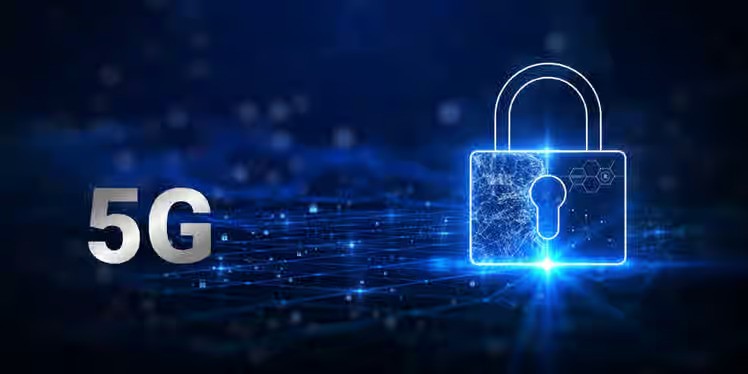Uncategorized
Securing Networks Against 5G Vulnerabilities
Overview
The dawn of 5G technology promises a revolution in connectivity, providing blazing-fast speeds, ultra-low latency, and the ability to connect billions of devices. This interwoven landscape of innovation holds immense potential, transforming industries, powering smart cities, and fostering groundbreaking advancements in communication. However, this progress may cause some vulnerabilities. As we step into this interconnected future, securing our networks against the inherent 5G vulnerabilities becomes not just a necessity, but a collective responsibility.
This article delves into the challenges of 5G security, dissecting its strengths and weaknesses, exploring potential attack vectors, and weaving together comprehensive strategies to fortify networks against malicious intentions.
Understanding 5G Security Landscape
While 5G presents significant security advancements compared to its predecessors, it is crucial to remember that no system is completely safe from attack. Advanced cryptographic algorithms like 256-bit AES encryption stand guard over data transmissions, acting as the first line of defense. Network slicing, on the other hand, isolates traffic for various applications, restricting unauthorized access. Further enhancing security, the separation of control plane and user plane functions in the network architecture, minimizing the impact of potential breaches.
However, the very density of the 5G network, with its multitude of base stations and connected devices, expands the potential attack surface, creating numerous entry points for intruders. New protocols and interfaces, while opening doors for innovation, create uncharted territory for security professionals, demanding continuous vigilance and adaptation.
Exploring 5G Vulnerabilities
As we explore the complexities of 5G networks, we discover potential weaknesses that could compromise security:
- Supply Chain Shadows: The complex global supply chain of 5G equipment presents a significant risk. Malicious actors might infiltrate the chain, embedding vulnerabilities in hardware or software, creating backdoors for future exploitation. This vulnerability acts as a hidden passageway, allowing attackers to bypass traditional security measures.
- Misconfigured Fortunes: Improper configuration of 5G devices or network elements can create exploitable weaknesses. Attackers can gain unauthorized access or manipulate data, potentially causing significant disruptions and compromises.
- Signaling Sirens: These attacks target the communication protocols used by network elements, potentially enabling eavesdropping, data manipulation, or denial-of-service attacks.
- Man-in-the-Middle Mayhem: In this scenario, attackers intercept communication between devices and the network, stealing sensitive data or redirecting traffic for malicious purposes. This vulnerability can have severe consequences, compromising confidential information and disrupting critical operations.
- IoT’s Pandora’s Box: The exponential growth of connected IoT devices within 5G networks introduces a vast attack surface. These devices, often with weak security protocols or poor maintenance, act as vulnerable points of entry, creating a network riddled with potential weaknesses.
Strategies for Building Secure 5G Networks
Mitigating these 5G vulnerabilities requires a multi-layered defense, a series of proactive measures, continuous monitoring, and incident response preparedness. Each thread strengthens the network, collectively creating a resilient shield against malicious actors. Here are some key strategies:
- Zero Trust Philosophy: Implement a “never trust, always verify” approach where every device and user must be authenticated and authorized before gaining access to network resources. This creates a selective entry system, ensuring only authorized individuals can access the network.
- Segmented Defense: Divide the network into smaller, isolated segments based on security needs. This compartmentalization, minimizes the impact of a breach and restricts attacker movement.
- Secure Supply Chain: Implement rigorous security measures throughout the software supply chain, including secure coding practices, vulnerability assessments, and vendor risk management. This ensures the building blocks of the network itself are secure.
- Unwavering Vigilance: Deploy sophisticated security solutions that continuously monitor network activity for suspicious behavior and identify potential threats in real-time. This acts as a network of guards, constantly scanning for signs of intrusion and alerting authorities.
- Patchwork Perfection: Proactively apply security patches to software and firmware on all network devices and connected endpoints to address emerging vulnerabilities.
- Empowered Users: Foster a culture of cybersecurity awareness within your organization by providing training to employees and users on secure practices and potential threats.
- Incident Response Symphony: Develop a comprehensive incident response plan to effectively handle security breaches, minimize damage, and ensure rapid recovery. This plan acts as a well-rehearsed emergency protocol, ensuring everyone knows their roles and responsibilities in case of an attack.
Collaborative Efforts for a Secure 5G Future
Securing 5G networks is not a solitary quest, but a shared responsibility formed by various stakeholders:
- Service Providers: Leading the charge, service providers must invest in robust security solutions, implement best practices, and foster collaboration with other stakeholders. They act as the architects of the network.
- Technology Vendors: Collaborating with service providers, technology vendors must prioritize secure hardware and software development, employing secure coding practices and rigorous testing methodologies.
- Governments: Enacting and enforcing cybersecurity regulations, promoting best practices, and fostering international cooperation are crucial roles played by governments.
- Enterprises: Implementing robust security measures within their own networks, educating employees, and collaborating with partners are key responsibilities of enterprises.
- Individual Users: Executing good cybersecurity practices, using strong passwords, and being cautious about online activities are essential roles played by individual users.
Development never ceases
The 5G security landscape is constantly evolving, demanding continuous vigilance and adaptation. As new threats emerge, implementing new security measures is crucial. Staying informed about the latest vulnerabilities, attending security training, and collaborating with other stakeholders are crucial aspects of maintaining a secure 5G environment.
The future of connectivity depends on developing strong 5G security. By understanding the vulnerabilities, implementing comprehensive strategies, and fostering a culture of collaboration, we can ensure a secure and thriving digital landscape for generations to come.

